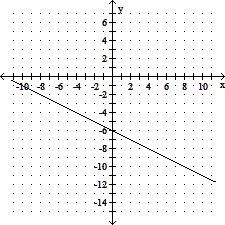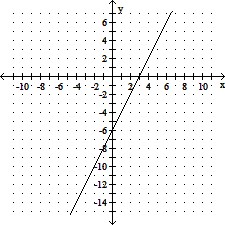Use the Principle of Mathematical Induction to show that the statement is true for all natural numbers n.1 ? 2 + 2 ? 3 + 3 ? 4 + . . . + n(n + 1) = 
What will be an ideal response?
First we show that the statement is true when n = 1.
For n = 1, we get 2 =  = 2.
= 2.
This is a true statement and Condition I is satisfied.
Next, we assume the statement holds for some k. That is,
 is true for some positive integer k.
is true for some positive integer k.
We need to show that the statement holds for k + 1. That is, we need to show that

So we assume that  is true and add the next term,
is true and add the next term,  to both sides of the equation.
to both sides of the equation.
1 ? 2 + 2 ? 3 + 3 ? 4 + . . . + k(k + 1) + (k + 1)(k + 2) =  + (k + 1)(k + 2)
+ (k + 1)(k + 2)
=  +
+ 
= 
= 
Condition II is satisfied. As a result, the statement is true for all natural numbers n.
You might also like to view...
Solve the problem that involves probabilities with dependent events. Elise has put 5 cans (all of the same size) on her kitchen counter; 2 cans of vegetables, 2 cans of soup , and 1 can of peaches. Her son, Ryan, takes the labels off the cans and throws them away. Elise then chooses 2 cans (without replacement) at random to open. Find the probability that she will open at least 1 can of vegetables.
A. 
B. 
C. 
D. 
Find the requested value. {6x + 6 if x ? 04 - 3x if 0 < x < 3x if x ? 3
{6x + 6 if x ? 04 - 3x if 0 < x < 3x if x ? 3
A. 4 B. -8 C. 3 D. 30
Convert the temperature algebraically. Round the answer to one decimal place.110°C to Fahrenheit
A. 230°F B. 79.4°F C. 43.8°F D. 166°F
Graph the linear function.g(x) =  x - 6
x - 6
A. 
B. 
C. 
D. 